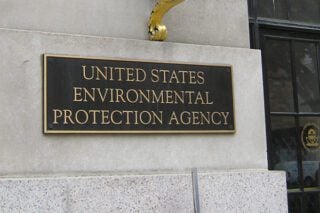
In early July 2023, the Environmental Protection Agency (EPA) issued a final rule regarding asbestos reporting. The regulation was issued under the Toxic Substances Control Act (TSCA). It requires asbestos importers, manufacturers and processors to report use and exposure information on all six types of asbestos.
This rule comes after a controversial 2019 final rule that narrowed the scope of required asbestos reporting. This new rule is intended to address asbestos exposure concerns more broadly. Proponents hope this will prevent asbestos contact that can lead to serious health issues like mesothelioma.
What Does the New Final Rule Cover?
The new final rule went into effect August 24, 2023. It requires any entity that manufactured, imported or processed asbestos from 2019 to 2022 with annual sales of $500,000 or more during that time to report its asbestos use. Reports must be submitted within six months of the August 24, 2023, effective date.
Notably, the rule specifically includes any companies that dealt with asbestos as an impurity. This includes products with talc and vermiculite, which can be contaminated with asbestos. Talc and vermiculite are both commonly used in consumer products like makeup, insulation and fertilizers. These products have been named in thousands of asbestos-contamination lawsuits over the years.
Recent History of the EPA’s Asbestos Rules and Risk Evaluations
This new rule comes after years of back-and-forth on final rules, court rulings and risk evaluations between the previous and current administrations. Some important pieces of the asbestos rule puzzle include:
- Risk Evaluation Chemicals Identified (2016): The EPA identified 10 chemicals/minerals for risk evaluation, including asbestos. However, the risk evaluation focused on only new uses of chrysotile asbestos. This excluded the other five types of asbestos and any legacy uses.
- Court Ruling (2019): In a court case, the public health interest group Safer Chemicals, Healthy Families, challenged the decision to evaluate chrysotile asbestos alone. The court decided the EPA should not have excluded legacy uses of asbestos. As a result, the EPA broadened part 2 of the risk evaluation’s scope.
- Risk Evaluation Part 1 Released (2020): The EPA released the first section of its risk evaluation, “Risk Evaluation for Asbestos Part 1: Chrysotile Asbestos.” It concluded that chrysotile asbestos poses an unreasonable risk to human health. The evaluation also defined the scope of part 2, which included legacy uses of asbestos.
- Proposed Chrysotile Asbestos Ban (2022): The EPA proposed a rule to ban all uses of chrysotile asbestos in the United States. The ban has not yet been finalized but is up for review later this year.
- Final Rule on Asbestos Reporting (2023): As covered above, this rule requires reporting on uses of all six types of asbestos.
- Scheduled Release of Risk Evaluation Part 2 (2024): The EPA entered into a consent decree (an agreement between parties submitted to a court) to release part 2 by December 1, 2024.
Why Is the New Final Rule Important?
With all of the regulatory updates, murky language and back-and-forth, it can be challenging for a layperson to determine what the point of each rule is. But in summary, the asbestos use data required by the new final rule could be important in forming other regulations, such as an asbestos ban.
The EPA will use the data reported through the new rule to decide on future asbestos rulings and evaluations. The EPA website provides talc use as an example. According to the EPA, “data collected on asbestos as an impurity could better inform the risk evaluation of the use of asbestos in talc.”
Updated asbestos regulations may help reduce exposure risks. Asbestos exposure can lead to cancers like mesothelioma and lung cancer. Protecting the health of U.S. citizens is one of the EPA’s top functions.
*Image Attribution: Environmental Protection Agency by dave_7 from Lethbridge, Canada, CC BY-SA 2.0, via Wikimedia Commons




